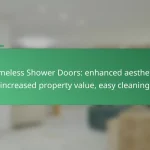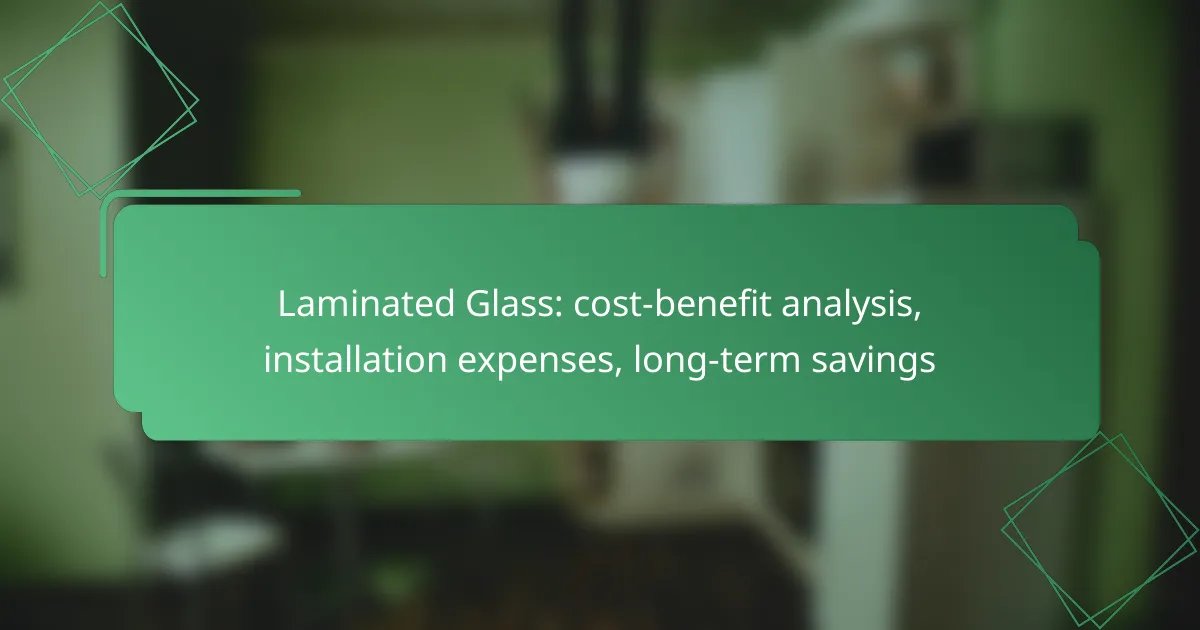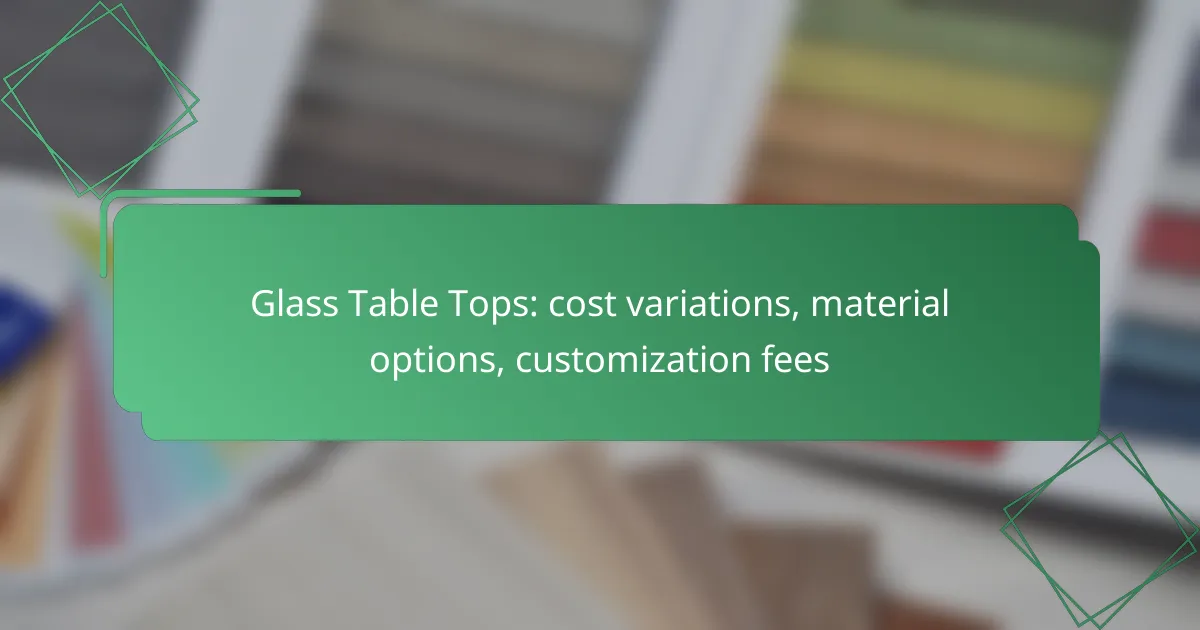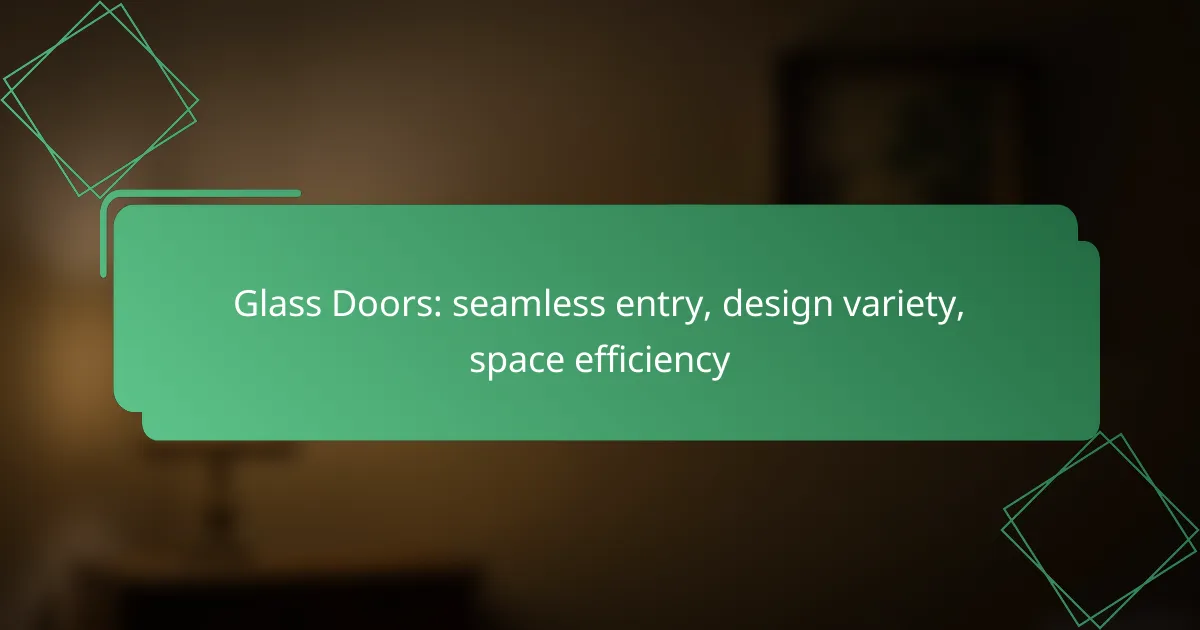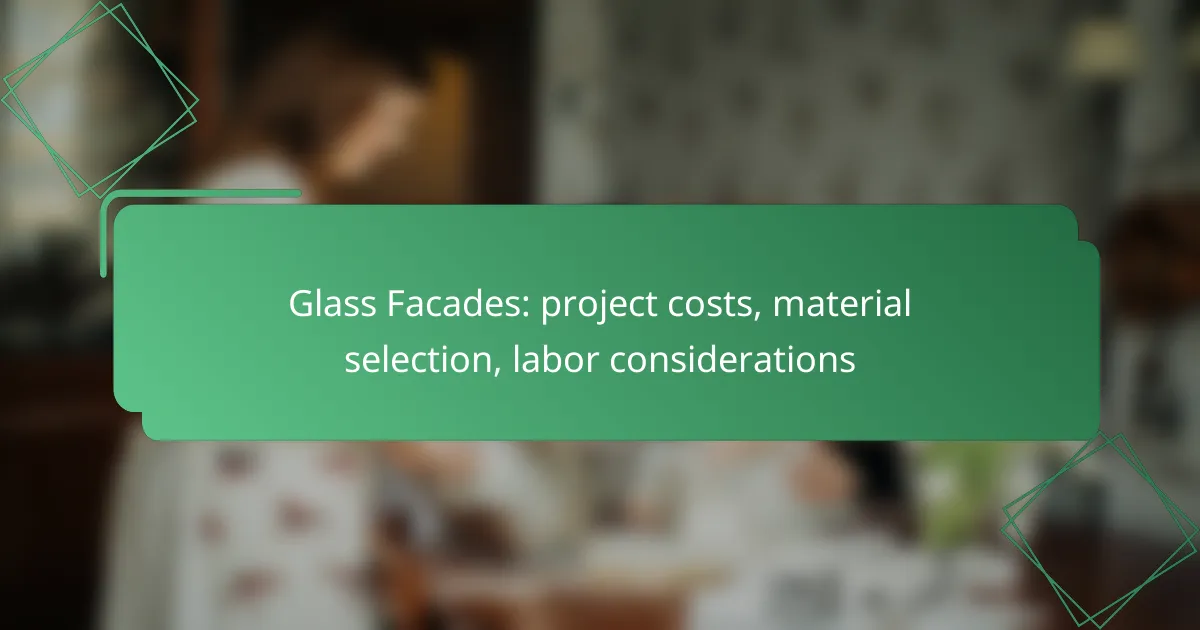Laminated glass offers a unique combination of safety, soundproofing, and energy efficiency, making it an attractive option for homeowners and businesses. While the initial installation costs may be higher than standard glass, the long-term savings from reduced energy bills and lower insurance premiums can make it a worthwhile investment. Additionally, its robust construction enhances security and protection against accidents, further justifying the expense.

What are the costs of laminated glass installation in Canada?
The costs of laminated glass installation in Canada can vary significantly based on several factors, including the type of project and the specific materials used. Generally, homeowners can expect to spend more on laminated glass compared to standard glass due to its enhanced safety and soundproofing features.
Average installation cost per square foot
The average installation cost for laminated glass in Canada typically ranges from CAD 50 to CAD 100 per square foot. This price can fluctuate based on the thickness of the glass and any additional features such as UV protection or custom sizing. It’s advisable to obtain multiple quotes from local contractors for a more accurate estimate.
Factors influencing installation costs
Special features, such as energy-efficient coatings or decorative finishes, can also add to the overall expense. It’s important to consider these elements when budgeting for your project.
Cost comparison with standard glass
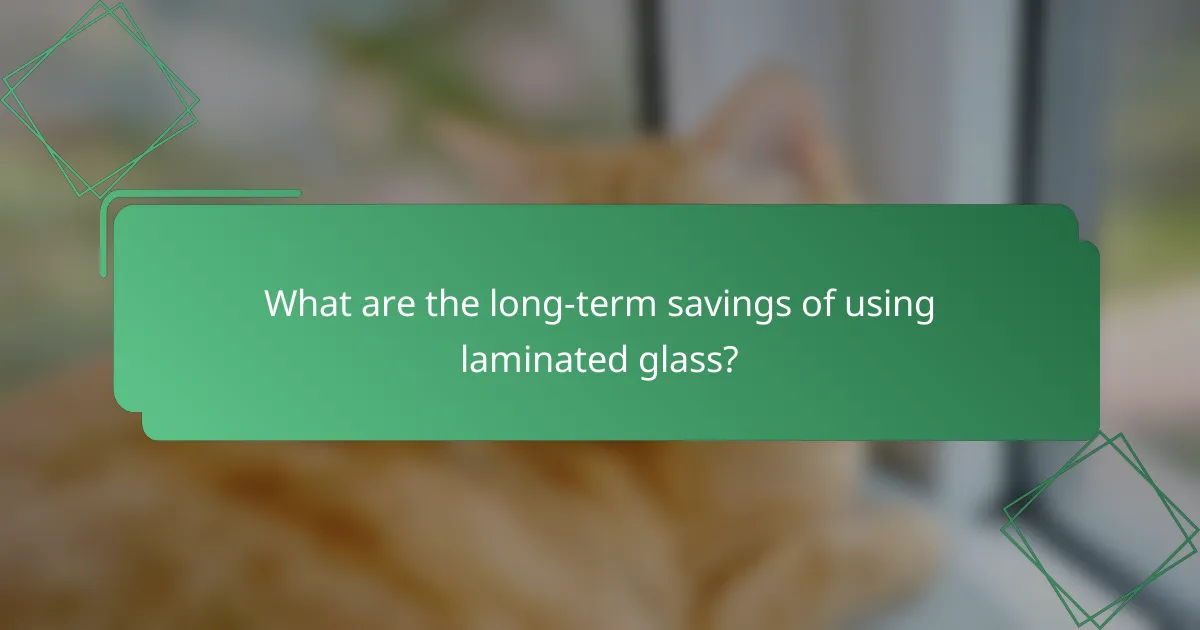
What are the long-term savings of using laminated glass?
Using laminated glass can lead to significant long-term savings through enhanced energy efficiency, lower insurance premiums, and reduced noise pollution. These benefits can offset the initial installation costs, making laminated glass a smart investment for homeowners and businesses alike.
Energy efficiency benefits
Laminated glass improves energy efficiency by reducing heat transfer, which can lower heating and cooling costs. It typically features a layer of polyvinyl butyral (PVB) that enhances insulation, helping maintain a stable indoor temperature.
In regions with extreme temperatures, homeowners may see energy savings of up to 20% on their utility bills. This translates to hundreds of dollars annually, depending on local energy costs.
Insurance premium reductions
Installing laminated glass can lead to lower insurance premiums due to its enhanced safety features. Insurance companies often offer discounts for homes with impact-resistant windows, as they reduce the risk of damage from storms and break-ins.
Homeowners might save around 5-15% on their insurance premiums, depending on the provider and local regulations. This reduction can accumulate to substantial savings over time.
Noise reduction advantages
Laminated glass effectively reduces outside noise, making homes more peaceful and comfortable. The PVB layer acts as a sound barrier, minimizing disturbances from traffic, construction, and other external sources.
In urban areas, laminated glass can decrease noise levels by up to 50%, significantly enhancing the living environment. This improvement can lead to better quality of life and increased property value, making it a worthwhile investment.
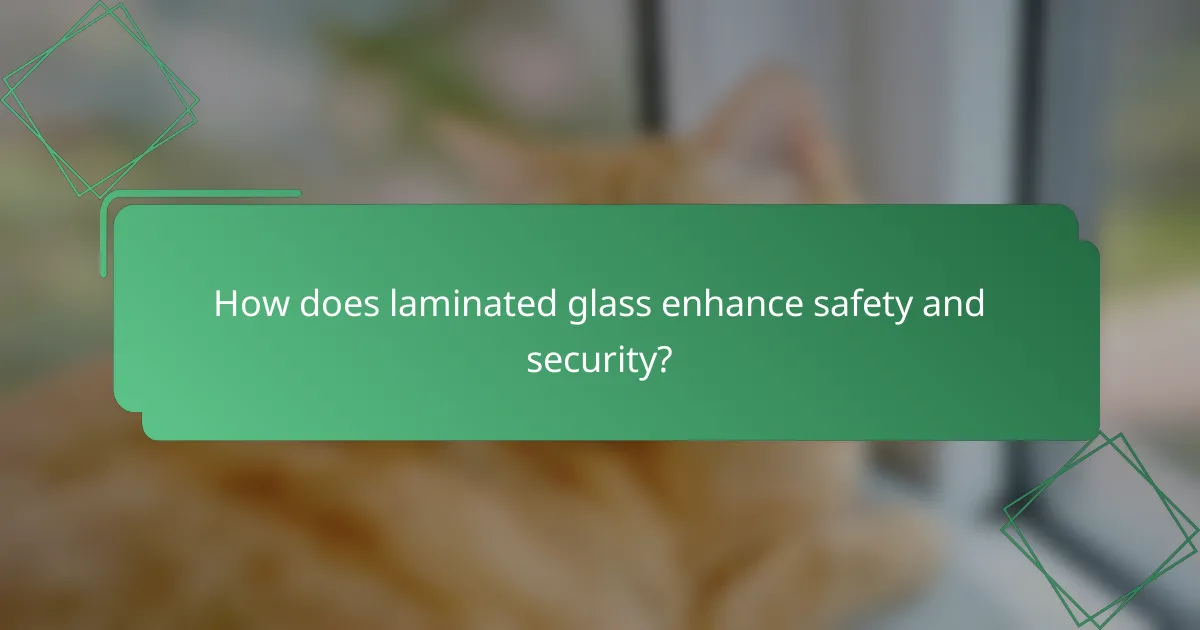
How does laminated glass enhance safety and security?
Laminated glass significantly enhances safety and security by combining two or more layers of glass with an interlayer, which holds the layers together even when shattered. This construction makes it difficult for intruders to break through and provides additional protection against accidents and natural disasters.
Impact resistance features
The impact resistance of laminated glass is a key feature that enhances safety. When struck, the glass may crack but will not shatter into sharp shards, reducing the risk of injury. This makes it ideal for areas prone to severe weather or potential vandalism.
Laminated glass typically meets safety standards such as ANSI Z97.1 or CPSC 16 CFR 1201, which outline performance criteria for impact resistance. Homeowners should consider these standards when selecting laminated glass for windows or doors.
Burglary deterrence properties
Laminated glass serves as an effective burglary deterrent due to its strength and resistance to forced entry. Intruders are less likely to attempt breaking through laminated glass, as it requires significantly more time and effort compared to standard glass.
In practical terms, using laminated glass in vulnerable entry points, such as ground-level windows and sliding doors, can enhance home security. Homeowners may also find that insurance premiums decrease when installing laminated glass, as it is recognized as a security upgrade by many insurers.

What are the aesthetic benefits of laminated glass?
Laminated glass offers significant aesthetic benefits, enhancing both the appearance and functionality of spaces. Its unique composition allows for a variety of design options while providing safety and sound insulation.
Design versatility
Laminated glass is highly versatile in design, making it suitable for various architectural styles. It can be used in windows, doors, and partitions, allowing for seamless integration into both modern and traditional settings.
With options for different thicknesses and colors, laminated glass can complement any design scheme. Its ability to be shaped and curved further expands its application in creative architectural projects.
Customization options
Customization is a key advantage of laminated glass, as it can be tailored to meet specific aesthetic preferences. Homeowners and designers can choose from a range of interlayers, including colored or patterned films, to achieve the desired look.
Additionally, laminated glass can be printed with custom designs or graphics, making it ideal for branding in commercial spaces. This level of personalization not only enhances visual appeal but also allows for unique expressions of style.

What factors should be considered when choosing laminated glass?
When selecting laminated glass, consider its safety, sound insulation, UV protection, and energy efficiency. These factors directly impact the overall performance and suitability of the glass for your specific application.
Building codes and regulations in Canada
In Canada, building codes dictate the minimum safety and performance standards for laminated glass. These regulations vary by province and municipality, so it’s essential to consult local building authorities to ensure compliance.
Common requirements include impact resistance and thermal performance, which are crucial for both residential and commercial applications. Familiarizing yourself with these codes can help avoid costly modifications during installation.
Environmental impact considerations
Choosing laminated glass can have positive environmental implications, such as improved energy efficiency and reduced noise pollution. Laminated glass often contains interlayers made from polyvinyl butyral (PVB) or ethylene-vinyl acetate (EVA), which can enhance insulation and lower energy consumption.
However, consider the lifecycle impact of laminated glass, including production, transportation, and disposal. Opting for manufacturers that prioritize sustainable practices can further mitigate environmental effects.
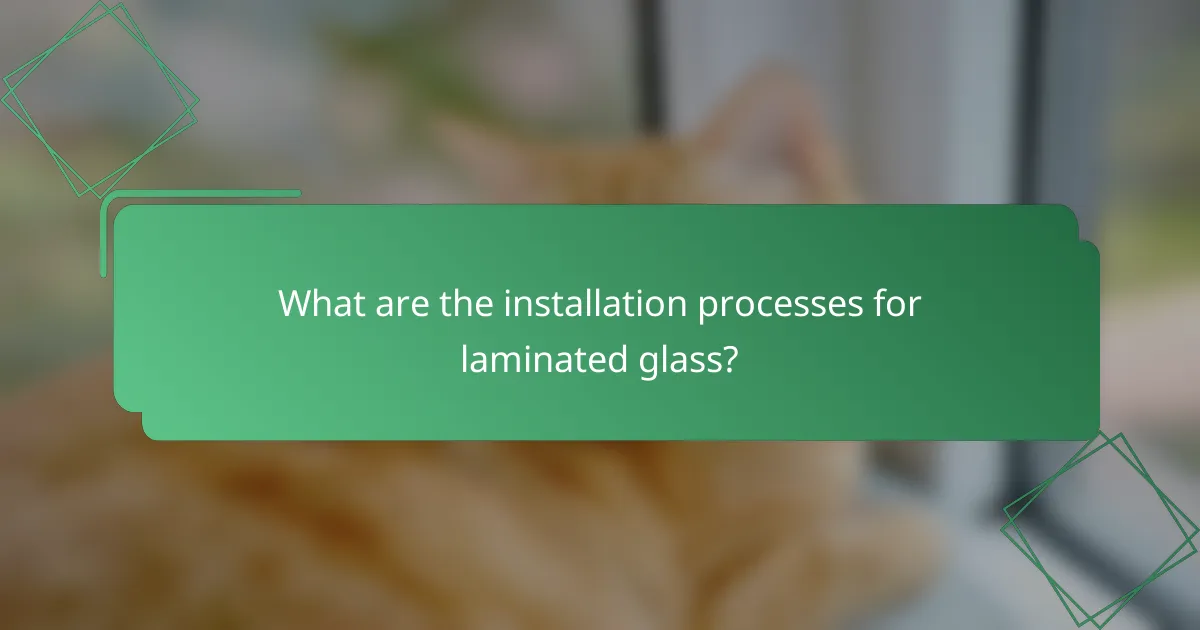
What are the installation processes for laminated glass?
The installation of laminated glass involves several key processes that ensure proper fitting and safety. This type of glass is typically installed in windows, doors, and other structures where enhanced security and sound insulation are desired.
Preparation steps for installation
Before installing laminated glass, it is crucial to assess the existing frame and ensure it is structurally sound. Measure the dimensions accurately to avoid any fitting issues, and check for any obstructions that could interfere with the installation process.
Next, clean the installation area thoroughly to remove dust, debris, and any old sealant. This step is essential for ensuring a strong bond between the glass and the frame, which can affect the overall performance and durability of the installation.
Tools and materials required
To install laminated glass, several tools and materials are necessary. Common tools include a glass cutter, suction cups for handling the glass, and a caulking gun for applying sealant. Safety gear such as gloves and goggles is also recommended to protect against potential injuries.
Materials needed typically consist of laminated glass panels, appropriate sealant, and weather stripping. Depending on the installation specifics, you may also require framing materials or brackets to secure the glass in place. Having all tools and materials ready before starting will streamline the installation process and minimize delays.
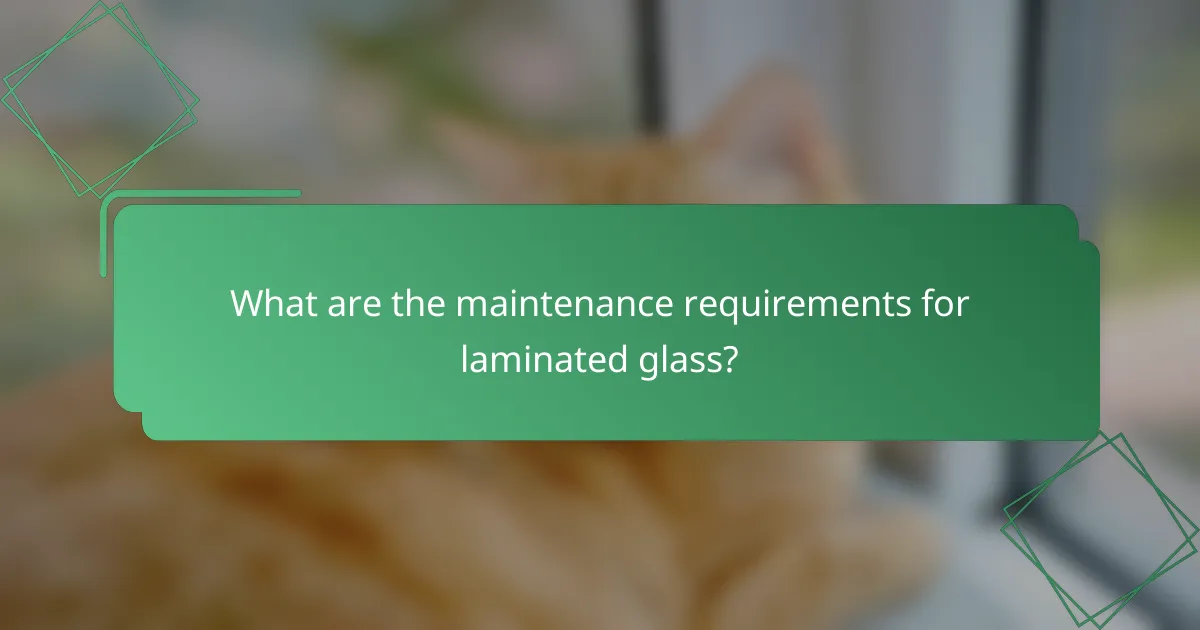
What are the maintenance requirements for laminated glass?
Laminated glass requires minimal maintenance, primarily focusing on regular cleaning and inspection for damage. Its durable nature means it resists scratches and impacts better than standard glass, making upkeep straightforward.
Cleaning recommendations
To maintain the clarity and appearance of laminated glass, use a soft cloth or sponge with a mild detergent solution. Avoid abrasive cleaners or tools, as these can damage the surface.
For routine cleaning, a mixture of water and vinegar can be effective. Wipe the glass with this solution and dry it with a microfiber cloth to prevent streaks.
Inspect the edges and seals periodically for any signs of wear or moisture ingress. Addressing these issues promptly can help prolong the lifespan of the laminated glass.




